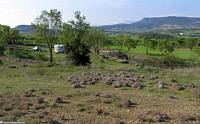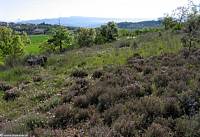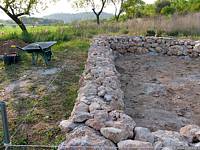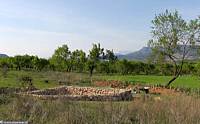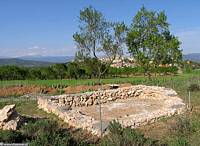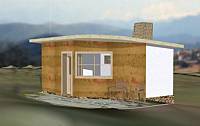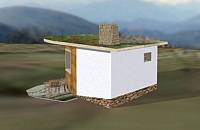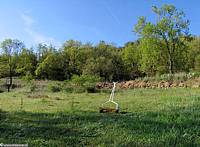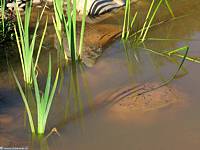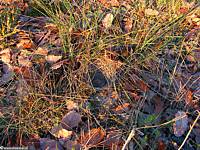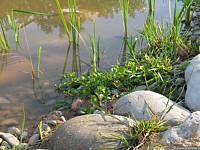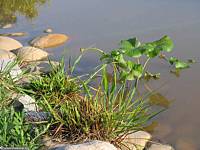|
|
Nature
Switched On
|
|
|
introduction |
2008 April 26 & 27, Saturday & Sunday These are really some of the best
days to stay on
|
Overview looking north. The Common thyme has just started to
flower. |
|
Pink and white Helianthemum violaceum,
yellow Hypochaeris radicata and violet Thymus
vulgaris. |
||
|
I reached the top of the foundation wall, at about 50 cm. I am quite
pleased with the result. Being a complete layman myself and having
to work with very irregular stones, the result doesn't look too bad.
|
||
|
Smallest stones on top on which
a final layer of mortar will be applied. Iris germanica
flowering at the background. Sunday 8:12 |
||
|
The piling of stones has ended. Grey mortar patches are
the reference points for the final layer of mortar. |
Overview, looking north. Sunday 18:19 |
|
|
|
Here are some virtual images of this multifunctional garden house.
The brown walls are raised with 'rammed earth', the white walls are
made of straw bales and plastered with earth. The roof is 'green'
and will be planted with Sedum
species.
Exterior area: 20m2
|
|
|
Looking north-west. |
||
|
This hand mower we bought for 10€ in a second hand store. We intend
to use it relatively frequently on an area near the caravan (and t
|
||
|
Partly mown area on the middle
terrace. Looking south. Saturday 9:02 |
||
|
We were not the only active creatures on the terrain. The Natterjack
toads (Epidalea
calamita) had done
their job well and as a result the first pond was full of
tadpoles. I wonder what these pioneering animals eat in the absence of almos
|
||
|
Tadpoles near some plants of Iris
pseudacorus and on the right the recently bought Acorus
calamus. |
||
|
|
||
|
Nest of the
Rock sparrow. |
||
|
A little bit too active was the neighbour's horse. It broke out at
night and went straight to the pond to have a nice bite at the fresh
green leaves of Yellow bottlegrass (Setaria pumila).
|
||
|
The systematically cut Setaria pumila.
In the centre the recently bought Lysimachia nummularium.
|
More cut Setaria
pumila. On the right, Caltha palustris, also
planted recently. Sunday 8:44 |
|
|
introduction
|
|
